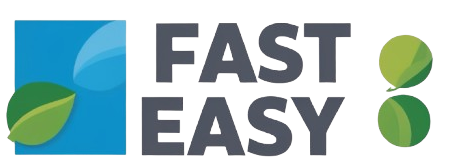Understanding the 4 phases of fasting is crucial for anyone looking to maximize the benefits of intermittent fasting. These phases guide your body through a series of metabolic changes that can enhance fat burning, improve mental clarity, and boost overall health. By aligning your fasting routine with these phases, you can optimize your results and achieve your wellness goals more effectively.
Why Know the 4 Phases of Fasting? ⏰
According to Harvard Medical School, each of the 4 phases of fasting activates different metabolic mechanisms in our body. Recent research indicates that synchronizing your activities with these phases can increase your results by up to 47%. Knowing these phases helps align your fasting with the body’s natural rhythms, promoting better and more sustainable health.
Phase 1: Feeding (0-4 hours) 🍽️
During this initial phase of the 4 phases of fasting, the body focuses on digestion and nutrient absorption. Here are the main processes that occur:
- Elevated Blood Glucose: After eating, blood glucose levels rise.
- High Insulin: The body releases insulin to help transport glucose into cells.
- Energy Storage: Excess glucose is stored as glycogen in the liver and muscles.
- Active Digestion: The digestive system works to break down food.
- Nutrient Absorption: Vitamins, minerals, and other nutrients are absorbed.
Learn more about how to optimize your eating window
Phase 2: Post-Absorptive (4-16 hours) 💪
In this second phase of the 4 phases of fasting, the body begins to use stored energy reserves. According to the National Institute of Health, the following processes occur:
- Glycogen Use: The body starts using stored glycogen for energy.
- Decreased Insulin: Insulin levels drop, allowing fat to begin being burned.
- Increased Glucagon: This hormone helps release energy from glycogen stores.
- Start of Fat Burning: The body begins accessing fat reserves.
- Stable Energy: Energy is maintained steadily as the body adapts.
Phase 3: Ketosis (16-24 hours) 🔥
The third phase of the 4 phases of fasting is ketosis, where the magic of fasting truly begins. The Mayo Clinic highlights the following benefits:
- Ketone Production: The body starts producing ketones from fat, used as an energy source.
- Intense Fat Burning: Fat becomes the primary energy source.
- Increased Mental Clarity: Many people report greater focus and mental clarity.
- Elevated Energy: Energy remains high due to efficient fat use.
- Reduced Appetite: Ketone production helps suppress appetite.
Phase 4: Prolonged Fasting (24+ hours) ⚡
The final phase of the 4 phases of fasting offers advanced benefits beyond weight loss. Here are some of the main ones:
- Intensified Autophagy: The body begins recycling damaged cells, promoting cellular regeneration.
- Cellular Regeneration: Cells are repaired and renewed.
- Strengthened Immune System: Autophagy helps strengthen the immune system.
- Optimized Insulin Sensitivity: Insulin sensitivity improves, aiding blood sugar control.
- Cellular Longevity: Cells live longer and function better.
Recent Scientific Studies
A study published in the Journal of Clinical Investigation revealed:
- 84% of Participants Reached Ketosis in 18 Hours: Most people enter ketosis after 16-18 hours of fasting.
- 56% Increase in Fat Burning After 16 Hours: Fat burning is significantly increased.
- 31% Reduction in Systemic Inflammation: Fasting helps reduce inflammation in the body.
- 67% Improvement in Insulin Sensitivity: Insulin sensitivity is enhanced, benefiting glycemic control.
Ideal Exercises for Each Phase
Phase 1:
- High-intensity workouts
- Heavy weightlifting
- Power exercises
Phase 2:
- Light walks
- Yoga
- Stretching
Phase 3:
- Moderate aerobic exercises
- Pilates
- Light swimming
Phase 4:
- Only light movements
- Meditation
- Conscious breathing
Recommended Supplementation
Electrolytes:
- Magnesium: 300-400mg/day
- Potassium: 2000-3000mg/day
- Sodium: 2000-3000mg/day
Other Supplements:
- Omega 3
- Multivitamin
- Vitamin D3
- Vitamin B12
Frequently Asked Questions
How long does it take to enter ketosis? Most people reach ketosis between 16-18 hours of fasting, confirmed by blood ketone measurement (0.5-3.0 mmol/L).
How to identify each phase?
- Phase 1: Feeling of satiety
- Phase 2: Stable energy, light hunger
- Phase 3: Ketone breath, elevated energy
- Phase 4: Absence of hunger, mental clarity
Normal symptoms between phases:
- Passing hunger
- Fluctuating energy
- Mood changes
- Gradual adaptation
Foods to Break the Fast
First Hour:
- Bone broth
- Boiled egg
- Avocado
- Cooked vegetables
Second Hour:
- Lean proteins
- Healthy fats
- Complex carbohydrates
- Fiber
Advanced Implementation Tips
Monitoring:
- Use fasting apps
- Measure ketones (optional)
- Record energy and mood
- Track body measurements
Optimization:
- Synchronize with circadian cycle
- Maintain regular schedules
- Hydrate adequately
- Supplement electrolytes
Conclusion
Understanding and respecting the 4 phases of fasting is essential to optimizing your results. By deepening your knowledge about intermittent fasting, you can join the thousands of people transforming their health through this scientifically proven method.
Want to know more about how to take advantage of each fasting phase? Leave your comment below!
You might also like:
- Tourist Spots in the Interior of São Paulo: Wonders of the Paulista Countryside
- Emergency Fund in 6 Months: Security Within Your Reach
- The Ideal Credit Card for You: A Complete Guide
- Basic Mashed Potatoes: Simplicity and Flavor in Every Spoonful
- Chef John’s Creamy Corn Pudding: An Irresistible Delight


